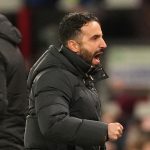Angela Weiss/AFP/Getty Images
- Goldman Sachs and Bank of America both cut GDP forecasts. The reason: not enough spending.
- Americans’ spending slid more than expected in July, starving the recovery of its biggest booster.
- Still, both banks see growth rebounding as the Delta wave weakens and Americans get back to shopping.
- See more stories on Insider’s business page.
Wall Street is tempering its hopes for the US recovery. A handful of big banks say it’s the American people who spoiled the party.
With the Delta wave on the rise, causing a dip in consumer spending and confidence, Goldman Sachs slashed its forecast for third-quarter gross domestic product growth to 5.5% from 9% on Wednesday. Bank of America followed on Friday, cutting its GDP estimate to 4.5% growth from 7% and officially implying the recovery peaked in the second quarter.
Bank economists aren’t the only ones on Wall Street growing more pessimistic toward the recovery. Only 27% of fund managers expect growth to improve over the next 12 months, according to a survey conducted by BofA earlier in August. That’s the smallest share since April 2020, when lockdowns just started to freeze the US economy. That print also came before retail sales data showed spending slow more than expected in July.
That spending slowdown sits in the center of Wall Street’s gloomier outlook. The surge in Delta cases prompted a resumption of mask-wearing rules across the country and revived fears of catching the coronavirus. Those trends quickly dragged on Americans’ spending. Retail sales slid 1.1% in July, with the largest declines showing up at clothing stores, bookstores, and car dealerships.
Consumer spending counts for roughly 70% of economic activity, making retail sales one of the most relevant measures of the US recovery. Put simply, Americans stopped spending as much in July, and the recovery is likely going to be worse off for it.
The retail sales report shows a “sharp pullback in demand” and starts the quarter off “on a bad note,” BofA economists led by Michelle Meyer said in a note. Even if spending bounces back in August and September, the bleak July print points to “relatively muted” growth in the third quarter, they added.
The data showed a “larger slowdown in spending than we expected,” particularly in service sectors that have yet to stage full recoveries, Goldman economists led by Jan Hatzius said. If case counts continue to rise and restrictions intensify, the recovery could stumble further.
Still, both teams are holding out hope that spending can bounce back before 2022. The slump shouldn’t last long, as the duration of Delta outbreaks in Europe suggest case counts in the US could start to fall in September, the Goldman economists said. The bank raised its fourth-quarter GDP forecast to 6.5% from 5.5% on Wednesday as well, noting the expected drop in cases should power a buying spree similar to that seen through spring.
BofA maintained its fourth-quarter estimate of 6%. The Delta wave will bring “some permanent growth destruction,” but most growth will simply be delayed further into the future, the team said.
“Once the Delta threat is reduced and this COVID wave subsides, we should see the return of pent-up spending for leisure services,” the economists added. “Some categories will have a bigger bounce than others – perhaps travel more than restaurants/bars, for example – but we should see people reengage in these activities.”
Powered by WPeMatico






